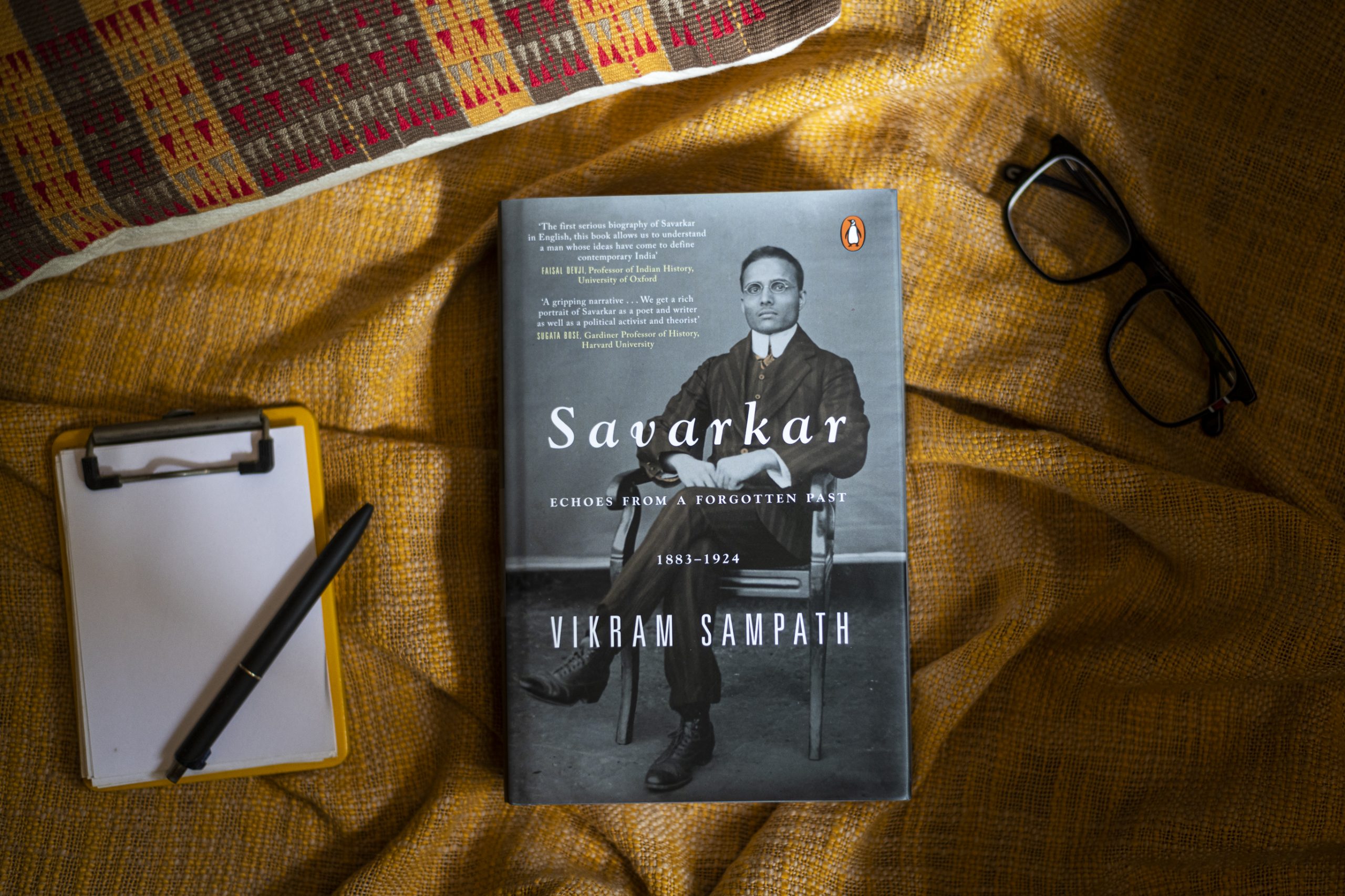
In his new book, Savarkar – Echoes from a Forgotten Past, historian Vikram Sampath paints a powerful portrait of one of the most contentious political thinkers and leaders of the twentieth century- Vinayak Damodar Savarkar.
A man who simultaneously meant many things to many people – An alleged atheist and a staunch rationalist who strongly opposed orthodox Hindu beliefs and the caste system and dismissed cow worship as mere superstition, Savarkar was also the most vocal political voice for the Hindu community through the entire course of India’s freedom struggle.
Read on to know some facts provided by the book on his ideology and political movement:
“Right from his childhood, Vinayak found the caste system that plagued Hindu society reprehensible.”
∗
“It was in these very narrow lanes of Tilbhandeshwar that the first modern, organized secret society of young revolutionaries in India took shape. Under sixteen-year-old Vinayak’s stewardship, and Mhaskar and Paage as members, the Rashtrabhakta Samuha, or The Society of Patriots, was formed towards the end of November 1899.”
∗
“The Congress, Vinayak said, kept harping on about cutting leaves and pouring milk (prayers and petitions) to the poisonous tree. According to him, following the path of the Congress and Gokhale—of peaceful petitions and prayers—might get a few Indians jobs and fanciful titles, but not total independence for the nation.”
∗
“Vinayak’s Abhinav Bharat was far from a bunch of misguided youth hurling bombs and assassinating random officers. It had a clear road map of how to instigate that ultimate pan-India revolution, taking inspiration from the seeds of 1857, and extinguish the Empire in its massive blaze.”
∗
“It was into this mysterious and enigmatic world of pain and torture that Vinayak was ushered in the wee hours of the morning. His arrival in the settlement has been recorded as on 30 June 1911.”
∗
“The radial, seven-winged monstrous jail with a high watchtower at the intersection sent shivers down the spine of many brave hearts. The seven wings, with three storeys each and having a series of cells totalling up to 698, radiated outwards like the spokes of a bicycle wheel. A large bell hung on the tower to raise alarm. Each cell measured 13’6″ by 7’6″. There was a small ventilator at a height of 9’8″ from the ground. The solitary cells were so arranged as to prevent any communication among prisoners. It was named ‘Cellular Jail’ because there were only cells and no barracks.”
∗
“Many prisoners were let out of the jail for outside work after they had completed six months of stay. In Vinayak’s case, while his solitary confinement of six months ended on 15 January 1912, he was not let out of prison even after he had adhered to all prison norms….On one such hot afternoon, while pulling the grinding mill, Vinayak began panting for breath and felt faint. His stomach was cramped and excruciating pain wracked his body. He fell to the ground and his eyes closed. For a couple of minutes, a sense of nothingness engulfed him. This near-death experience opened his mind to the idea that leaving the body was a far better proposition than making it endure so much pain and suffering.”
Read this well-researched biography to know more about Savarkar’s philosophy and its place in the rise of Hindutva, an idea dominant in Indian politics today.








